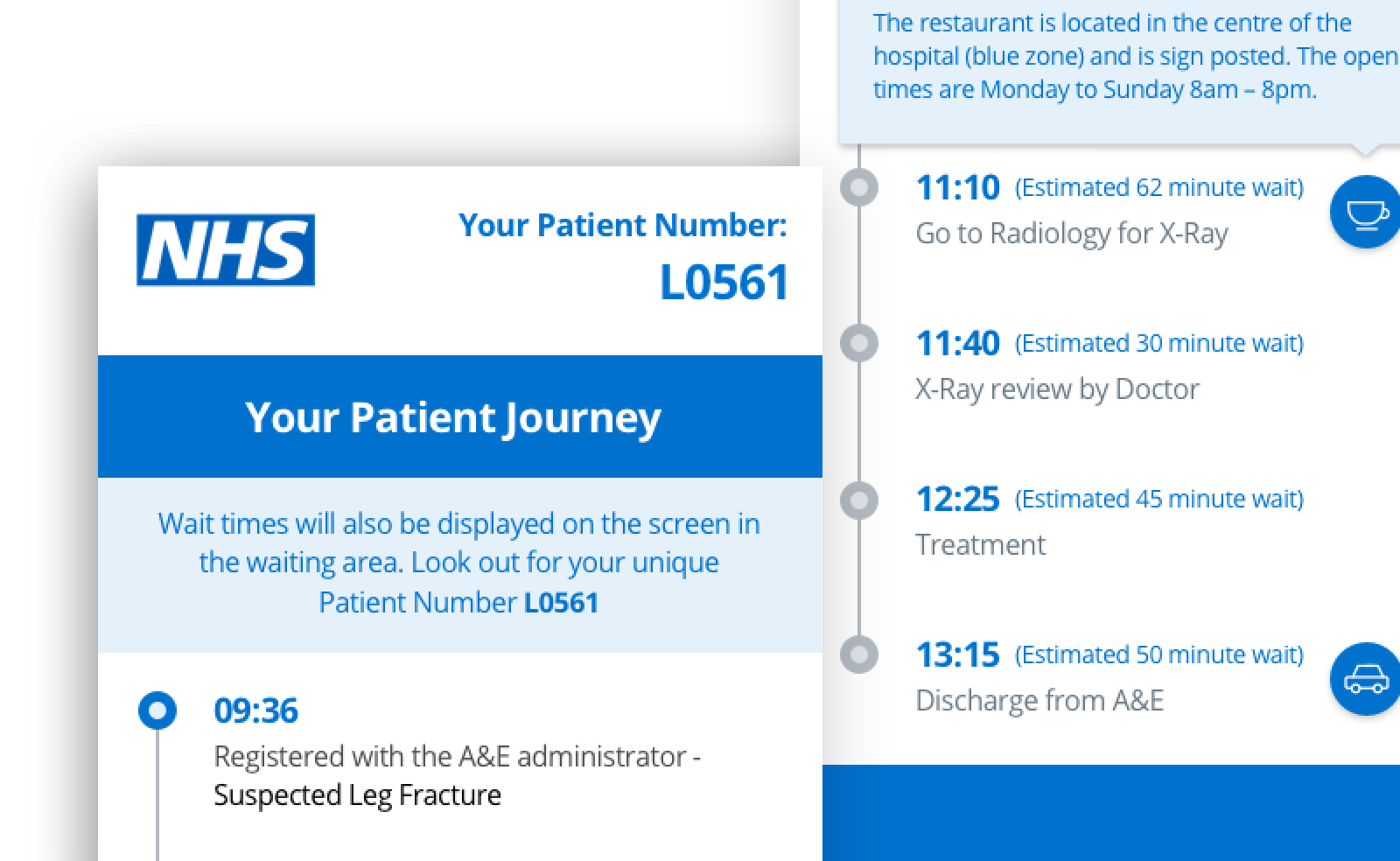Reframing the patient experience in an NHS Accident & Emergency waiting room
The Challenge
Hospitals are doing their best to manually predict approximate waiting times for patients, using current and historical A&E data but this can be inaccurate and often patients are left with long periods without visibility of their patient journey. In an NHS survey of 31,168 A&E patients, 59% of respondents said they were not told how long they would wait before being examined and 35% of patients either couldn't find somewhere to get a suitable meal or weren't even aware they were allowed to eat or drink. It therefore comes as no surprise that patients are left feeling extremely frustrated and distressed at a time when they're already in a vulnerable state.
NHS Trusts needed a better way of sharing information with A&E patients in order to reduce stress and pressure on staff.
Pain Points 💢
- Lack of visibility for wait times
- Unable to leave waiting area for refreshments or comfort breaks without risking missing being called for triage
- No information about possible stages of triage/treatment and their approximate duration
The Solution
Reducing A&E waiting times is the ultimate goal, but while we strive to get there, we need to focus on creating a better patient experience and one way to do this is to provide transparency of the patient journey.
Using a data centric platform would enable Trusts to more accurately predict waiting times and display real time data on screens in the A&E waiting area as well as a patient facing application to transform the patient and user experience.
So, how would the solution work?
Let's say a patient has come into A&E with an injured leg after playing football. Upon arrival, they are seen by the A&E administrator and diagnosed with a suspected leg fracture. They are then assigned a unique QR code. They're also told to keep their eye on the screens in reception for updates.
The patient scans their unique QR code which opens the web app. They are presented with a timeline displaying their unique patient journey. The app is already showing the first step they completed when they saw the A&E administrator at 09:36 and they now have an estimated 32 minute wait before their assessment with the Triage Nurse.
When the patient is ready to be discharged, due to nature of their injury, the app will prompt them to either call a friend to pick them up, or to book a taxi.
In this patient's case, they were facing a number of lengthy waiting periods, and the app provided them with the opportunity to visit a café for refreshments. The application was designed to notify and encourage the patient to visit the café to give them an opportunity to get something to eat or drink. It was also designed to encourage patients to move to a more relaxing and comfortable waiting area, while helping to prevent overcrowding in the hospital's main A&E waiting area.
The Outcome
The projected waiting room capacity would be increased as patients would be able to freely move to other areas of the hospital or even outside whilst waiting for treatment. Transparency about wait times would also help to reduce stress levels.
Key features of the solution:
- Unique QR code associated with patient reference number that links to the web app
- Ability to view wait times for different phases of triage
- Hospital location-specific information for facilities/amenities such as toilets and restaurants
- Functionality to arrange for transport
- Push notifications rather than broadcast across the waiting room for better privacy
